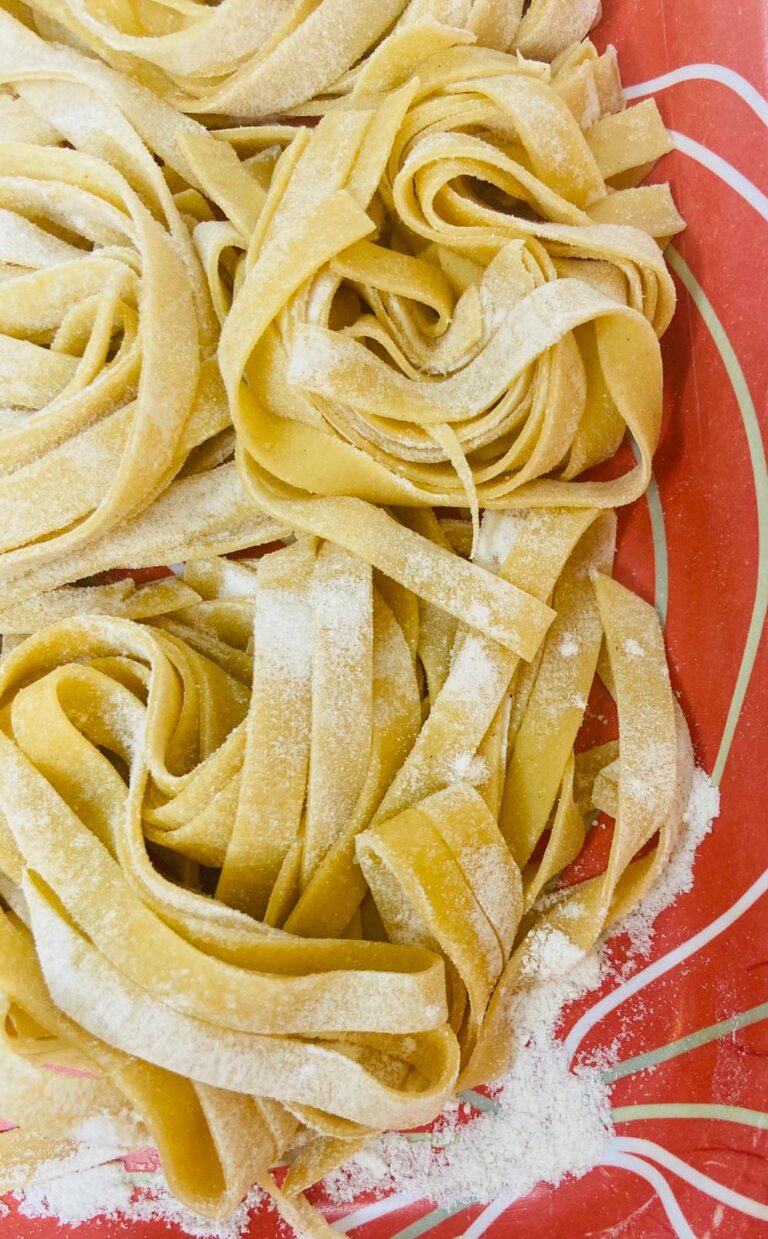We think of Pasta often as being exclusively Italian, but we couldn’t be more wrong. The origins of pasta or noodles are in the far East. Archeological digs in China have found remains of pasta dating back to 4000 BCE. The pasta travelled west along the silk route, and into Europe through Spain and Sicily. In Sicily, during the 11th and 12th century the Jews took on pasta making on a commercial level, when they were expelled from Sicily because of the Spanish inquisition they made their way north and took the pasta making skills to their co-religionists in the north of Italy. By the 15th century, it was common for Jewish housewives to make pasta once a week. Unlike Italian, Jews and non-Jews alike, pasta or noodles in Northern Europe were used much as the Asians do as soup extenders and not as a dish within itself.
In Hungary in particular the pasta tradition is incredibly strong, with soup and its pasta soup extenders appearing at least once a day. So much so that there is a specific shape of pasta for each kind of soup.
Making your own pasta may seem like too much work when you consider you can buy pasta almost anywhere, including fresh pasta. That said the homemade stuff just tastes better and fresher. It’s a great way to get more reluctant cooks in the kitchen and the feeling of accomplishment is pretty great too.
*A note on pasta thickness, I have looked far and wide for the ideal thickness of pasta to be written somewhere, and most recipes seem ambiguous about it. One famous Italian TV chef lays down pasta sheets and blows at them to make them ripple, once rippling he claims they are thin enough, surely this method has more to do with lung capacity then thinness of said dough? And what I eventually came to realize is that pasta should be made to the specific purpose it is intended. Is this pasta below intended to hold a heavy or a light sauce, will it be noodles for my soup or the base for a Lokshen (noodle) kugel? With that in mind, I worked backward, deciding what the intended purpose of the pasta is and what thickness would best serve that purpose. And I tested out on my family as well, rolling the pasta to the different levels offered by my pasta machine, cooking the pasta and asking them which thickness they liked best for the upcoming proposed dish. Once more this sounds like so much work, view it instead as experimentation and a great household bonding activity!
- 300g ‘00’ pasta flour, or all plain (all-purpose) flour, plus extra for dusting
- 2 eggs
- 4 yolks
- Pinch of salt
- In a small bowl beat together the eggs and egg yolks. Place the flour in a large shallow bowl add ¾ of the egg mixture and a pinch of salt, start folding in the flour until dough comes together, if the dough is dry, add the remaining egg a bit at a time until the dough comes together when squeezed, knead for 5 minutes until smooth- the dough will be quite firm, it will soften as it rests. Cover with plastic wrap and leave to rest at room temperature for 60 mins.
- FOR FOOD PROCESSOR: place flour in the bowl of a food processor fitted with the blade attachment along with ¾ of the egg mixture and a pinch of salt. Pulse to large crumbs – they should come together to form a dough when squeezed (if it feels a little dry gradually add a bit more egg). On a lightly floured surface, knead for 1 min or until nice and smooth – the dough will be quite firm, it will soften as it rests. Cover with plastic wrap and leave to rest at room temperature for 60 mins.
- Cut the dough into quarters, working with 1 quarter at a time (keep the rest covered with plastic wrap, so it doesn’t dry) feed the dough through the widest setting on your pasta machine. (If you don’t have a machine, use a heavy rolling pin to roll the dough as thinly as possible.) Then fold into three, give the dough a quarter turn and feed through the pasta machine again. Repeat this process once more then continue to pass the dough through the machine, progressively narrowing the rollers, one notch at a time, until you have a smooth sheet of pasta. On the narrowest setting (to your taste -see note above), feed the sheet through twice.
- Cut as required dust in extra flour and set aside, or hang until dry (an hour will be enough time.) Store in a sealed air-tight container in the fridge for up to 3 days, or freeze for 1 month.


